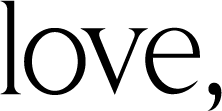
5 Journal Prompts for Deep Reflection
Monica GrunickFeeling like you are having trouble tapping into joy in your life? Want to bring a more centered approach to aligning your life's activities with what brings you fulfilment?
That feeling of being in the right frequency is light and airy. When the channel is full of static, we need to pause, reflect, and recalibrate.
Below are well-tested approaches that you can use to right your ship. I've provided links to the experts who crafted these prompts for further exploration at the bottom of this entry. These approaches will help you clarify and amplify the sources of joy in your life, and set you free of energies that are no longer serving you.
Journal Prompts
Grab a journal, a cup of tea, your favorite pen, and dive right in. Pick the prompt that resonates with you most to start. Come back to these when you feel you need to clear the static. Try all of the prompts; you may be surprised at how the ones that feel less natural may open your eyes to new possibilities.
1. Calendar Review
This prompt requires you to have a well-kept calendar of your work and social activities. If you do not keep a calendar closely, you may still want to read this prompt and consider keeping a calendar to perform this exercise in the future.
Open your calendar and review how you have been spending your time. Separate major categories that are similar types of activities, i.e., work, travel, fitness, home, social meetups, whatever categories make sense for your lifestyle. Generate a rough estimate of how much time per month is spent doing each activity. If you can calculate this for the last year, that is ideal, but even 3 - 4 months will give you a good sense of where your time is being spent.
Next, write down the activities that give you the most energy. These are things that you are excited to do or have a satisfying payoff. I love going to the gym, working on my business, hosting friends for dinner, and traveling for pleasure. Further define the amount of time you spend on these types of activities.
Write down the activities that do not give you energy, and can leave you feeling less fulfilled, and that you need to recover from. I feel depleted when running lots of errands, and too much TV and social media make me feel distracted and unsettled. Again, calculate how much time is spent on this list.
Reflect on the proportions of time and journal about how you would prefer to spend your time. This can be in the form of creating a goal of how many times you work out per week, or host friends per month. Alternatively, you may create a list of trips you want to take and a timeline for when they will occur.
Similarly, do the reverse for the items that do not bring you energy. Consider how you could reduce the activity, or perhaps just say "no" to people or places that do not energize you. If it cannot be eliminated (perhaps you don't enjoy your job), is there a different option that could replace it that would turn the negative into a positive? I might find a local delivery service or trip-chain my errands so I can do them on fewer days. Whatever the approach, it is setting the intention to bring in more joy, energy, and excitement to your life.
Make it actionable by writing down 3 adjustments you wish to make. They should be clear, resonate with you strongly, and be assigned a timeline. Don't pick the three that you "think" you should pick. Pick the three that you deeply want to be true, even if you're afraid or don't believe they're possible. Those that you feel the most will come to you most easily, despite preconceived notions.
2. Removing Limiting Beliefs
A limiting belief is a recurring thought that prevents us from growing into the best versions of ourselves.
Limiting beliefs can be extremely sneaky in that sometimes we may not even recognize them for what they are. The types of sticky thoughts, like "I don't have enough training to do ____," or "I am not good enough to be ____," or even "____ always snubs me", are all limiting beliefs.
You may start to catch them by noticing the types of thoughts we feel we have little influence over, that are written off as "that's just how it is," or that follow absolutes like "always" or "never".
When you have identified a limiting belief or two, start with a smallish one. A small and somewhat silly example is "I can't braid my hair." Now, let's begin the process.
First, ask if that thought is true. At first instinct, I may say, "yes, of course it's true, if I could braid my hair, I'd not feel embarrassed by the result, and never be able to rely on this as a style I could wear outside of the house." But here's a hint: because there are no absolutes (never and always have exceptions given different circumstances), your limiting belief statement is not really true.
Ask again, is it true? As I examine the statement more closely, I find that there may be some grey area. I can do pigtail braids quite well, and I used to do a side braid that I remember some of the technique for. Proving that the statement is not absolutely true.
Next, ask "Who would you be without that thought? How would you feel differently, act differently?" This question provides space to explore relief from the limiting belief. Braiding is a skill I can develop, so without the belief that "I cannot braid," I would expect to learn it over time, and I would practice braiding instead of avoiding it because I feel insecure about it.
Last, perform the turnaround. This is the process of rewriting your limiting belief to make it feel like something that is true to you. The secret is to rearrange the original statement by reversing positives and negatives, switching up the sentence perhaps even in a nonsensical way, until you arrive at the feeling of a new truth. Turn around 1: "I can braid my hair." Turn around 2: "My braid can hair me." Turn around 3: "My hair can't braid me." I've landed on "my hair can't braid me," I like that it feels like I am taking back control of my hair, and I can choose whether or not I am able to braid, and not fall victim to a limiting belief.
3. Future Fortifying
Thinking about big changes that could occur in the future can be exhilarating if your outlook is positive, but if unknowns and potential challenges are what come to mind, this is when forward thinking turns into anxiety. When there is an undercurrent of fear, this can greatly limit our actions towards future progress. For example, leaving the corporate world to start your own business may create more questions than answers, and prevent someone from venturing into their dream purpose.
Fear is a built-in response that can serve a valuable purpose, but when we are not in a true fight or flight situation, taking a more balanced assessment of the possible outcomes may serve us extremely well in pursuing an action that could bring considerable benefit to our lives.
This exercise is best applied to a specific change you may be feeling stuck in or afraid to make. The leaving the workplace example was a real one for me over 10 years ago. Then later, leaving a marriage. Smaller examples work just fine, too, like which email marketing software should our team use?
Ask yourself the question, "What is the best-case scenario of this change?" Write down your wildest dream of what you wish for to happen by making this change. Regarding my decision to leave corporate, I was motivated by the idea that the sky was the limit on my potential to be financially successful and live a lifestyle I loved, all supported by my creation, which felt true and enlivening to me.
Conversely, ask, "What is the worst-case scenario?" Go deep here, and thinking of all that could possibly go wrong, list out what you could lose financially, damage relationships, and any other measures that are important to you. My worst-case scenario would have been losing my investment in the business, and I would need to reenter the workforce at a new company and explain a gap in employment.
Next, make a plan for what you would do should the worst-case scenario happen. This will include ways to recover from the worst-case scenario, and also should be a plan to minimize your risk of the worst-case coming true. I knew that I had lots of employable skills and that I would be able to find another job soon. And I chose to invest an amount of money that would not significantly affect my long-term financial security should it be lost.
Review the positives and negatives again, with the actions for the worst-case scenario. At the very least, this exercise should clarify if you are ready to make a change, and at best, energize your focus and give you the confidence you need to take action on making your change become real.
4. Ownership Inventory
The theory of extreme ownership is a powerful tool to shift from a mindset where we feel at the mercy of things that happen to us and are out of our control, to accepting that when something we may not like has happened, we have a say in how we react, how we let it influence us, and how we can impact the outcome in the future.
A story we may tell ourselves that lacks ownership could sound like this: "I got soaking wet in the rain because I forgot my umbrella, because I was distracted cleaning up after my cat was sick this morning, I hate how she's messing up my house." Here, we are the victims of our circumstances that we have no control over.
Shifting this perspective, we could take ownership of our situation and the results that have transpired. One trick to doing this is to examine the scenario with curiosity. My cat getting sick threw off my morning routine and made me feel unsettled. What part of this could I have handled better? Perhaps I should wake up earlier to allow for the unexpected events of pet ownership. Or, I could have prepared my bag the evening before, or simply taken more curiosity in my husband's obsession with checking the weather forecast.
The attitude of taking ownership inspires growth and makes us feel like we have agency in our lives, versus being at the mercy of it. When we recognize the influence in our lives, we open the door to crafting a life that we truly love and that gives us joy. In the example above, I now have actions I can take to make future incidents better, and behaviors that can set me up for a more prepared and successful day.
A quick way to assess areas where you are feeling like you lack agency is to ask, "How am I complicit in creating the conditions I say I don't want?"
5. A Day in the Life
This is one of my favorite prompts because it feels like it is dripping in magic, potential, and energy. Imagine yourself on your perfect day, 10 years from today. The prompt is asking for just a single day to be described, and for you to imagine it from start to finish.
Go into detail, start with how you wake up. Where are you? What do the sheets feel like? What sounds do you hear? What is the temperature? Walk through that day like you would any normal day, go through the details of your morning routine, who you are with, what events or activities you do during the day, who you see, what you are eating, what you are wearing. Make it all feel as real as possible, and write it all down.
Take your day, fold it up, date it, and tuck it away somewhere. Do not return to it to reread it for some time. It could be the full 10 years, but maybe even just a year or two, until you rediscover it again after you've let yourself forget about it. Re-read it, and see how much of your dream life you have manifested.
While the payout may be years down the road, the important practice of setting your intention, as well as practicing visualization and feeling your future, is a tool that will give you benefits the more often you can do it.
Credits
I am a bit of a self-development afficionado, and have borrowed these relevatory journal prompts from some of the best thought leaders, self-explorers, and peace junkies out there. I highly recommend you go deeper into any that truly resonate with you, and explore what intricacies might be found by learning directly from the source.
- Past Year Review - Tim Ferriss
- The Work by Byron Katie
- Fear Setting - Tim Ferriss
- How am I complicit in creating the things I say I don't want - Jerry Colonna
- 10 Year Plan for a Remarkable Life - Debbie Millman



